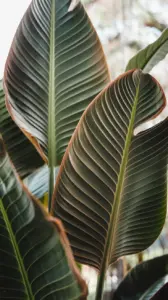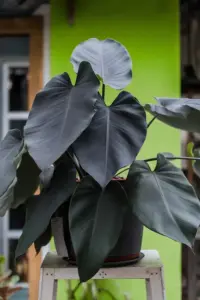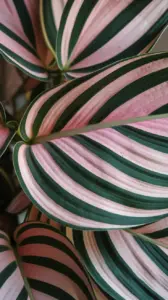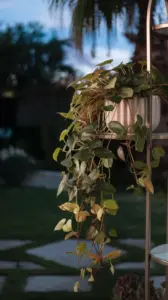Biological Features of Raven ZZ Plant
The Raven ZZ Plant, known scientifically as Zamioculcas zamiifolia, showcases stunning biological characteristics. This plant thrives in low-light conditions and exhibits remarkable tolerance to drought. The leaves are a deep, glossy green, and as they mature, they develop a striking blackish hue. This enchanting appearance notably enhances indoor spaces.
Adaptability and Growth
The Raven ZZ Plant grows in a unique way by storing water in its thick stems and roots. It can reach 2 to 3 feet in height, making it an attractive option for various settings. Additionally, its slow growth rate means that it requires minimal maintenance.
| Feature | Description |
|---|---|
| Leaf Color | Firm, glossy, dark green transitioning to black |
| Light Requirements | Low to indirect sunlight |
| Watering Needs | Infrequently; allow soil to dry out |
| Growth Height | 2 to 3 feet |
In summary, the Raven ZZ Plant captivates with its robust biological features. It is not only beautiful but also incredibly resilient. This makes it a popular choice among plant enthusiasts.
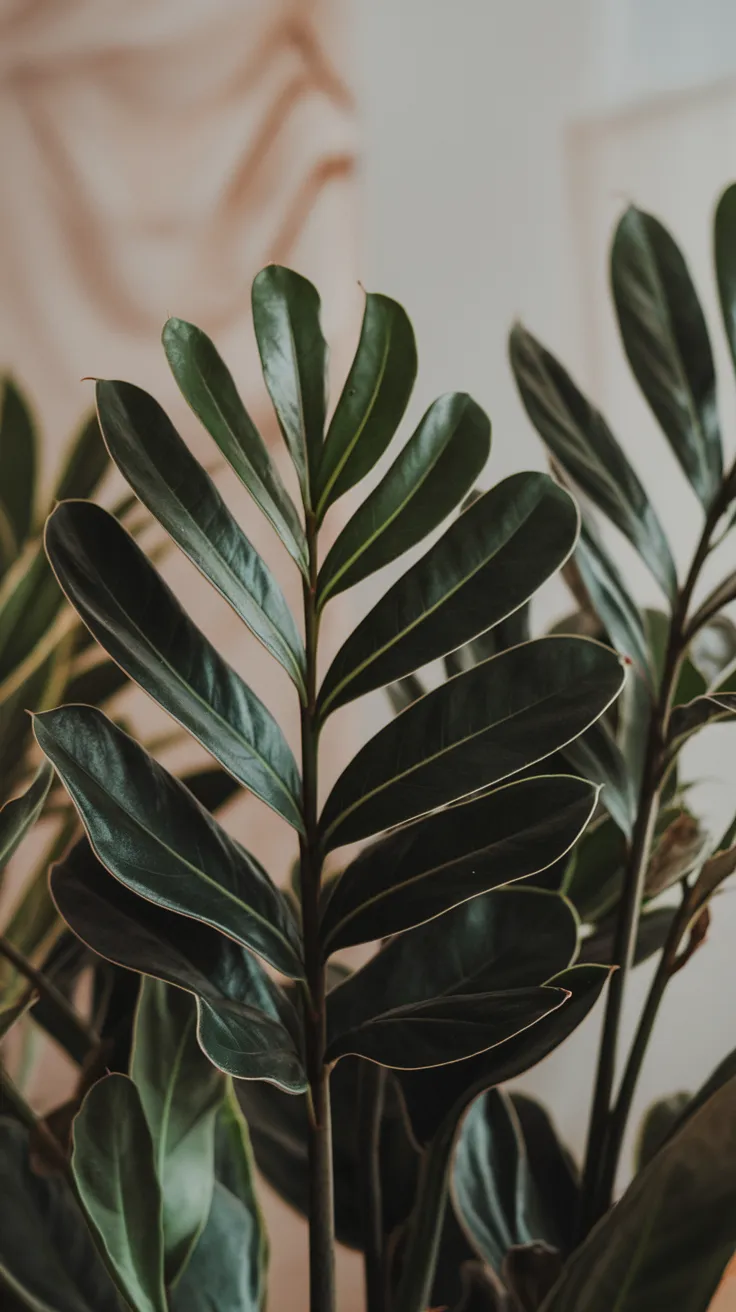
History and Cultural Significance
The Raven ZZ Plant, known for its striking dark foliage, is a captivating addition to any indoor space. Originating from Africa, it thrives in a variety of conditions, making it a popular choice among plant enthusiasts. The plant is particularly famous for its resilience. It can tolerate low light and infrequent watering, which makes it an ideal companion for busy individuals.
Symbolism and Uses
The Raven ZZ Plant holds a special place in various cultures. In Feng Shui, it is believed to bring good fortune and prosperity. Additionally, it is often used as a decorative element in homes and offices. Its glossy leaves make it a stunning focal point in any setting.
- Enhances the aesthetic appeal of indoor spaces
- Encourages a sense of tranquility and calmness
- Compatible with various interior design themes
- Easy maintenance suitable for novice plant owners
Moreover, the cultural significance extends to its use in traditional medicine in some regions. Though not widely studied, some herbalists appreciate its potential healing properties.
Modern Appreciation
In recent years, the Raven ZZ Plant has gained popularity on social media platforms. Its unique appearance and low maintenance needs have made it a favorite among millennials and urban dwellers. Many plant lovers share tips for care, propagation, and styling on platforms like Instagram and Pinterest.
As you consider adding this lush plant to your collection, remember its historical importance and cultural relevance. The Raven ZZ Plant not only beautifies your space but also connects you to a rich heritage of plant appreciation.
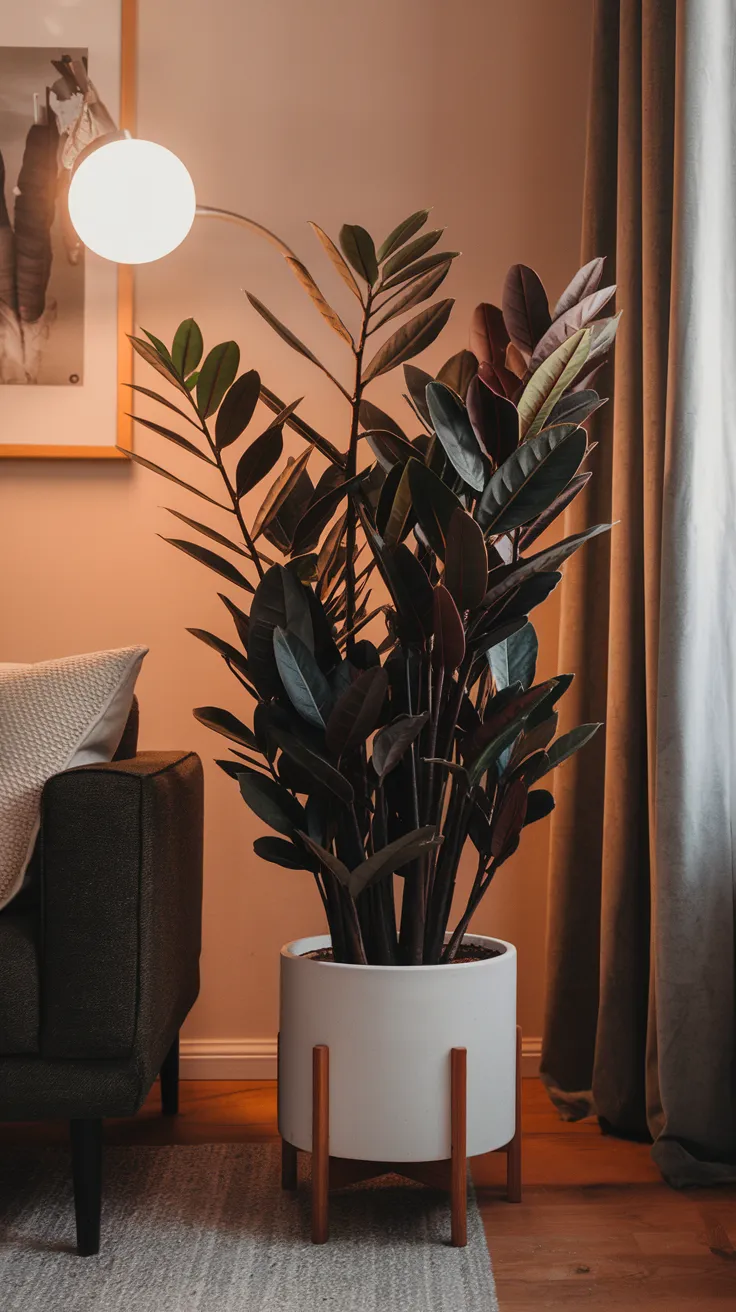
Ideal Growing Conditions for Raven ZZ Plant
The Raven ZZ Plant thrives in specific conditions that enhance its health and appearance. It prefers bright, indirect light but can tolerate low light environments. Therefore, placing it near a north or east-facing window works well. However, direct sunlight may scorch its leaves, so ensure some protection from harsh rays.
Temperature is another essential factor. Ideally, the Raven ZZ Plant enjoys temperatures between 65°F and 75°F (18°C to 24°C). Keep it away from drafts or extreme temperature changes. This plant can withstand slight fluctuations but prefers a consistent climate.
Soil Requirements
Use well-draining soil to prevent root rot. A mix designed for succulents or cacti often works well for the Raven ZZ Plant. Incorporating elements like perlite can improve drainage, ensuring the soil remains airy and moisture does not accumulate around the roots.
Watering Needs
Watering is crucial for the Raven ZZ Plant’s health. Allow the top inch of soil to dry before watering again. During the growing season, this typically means watering every two to three weeks. Reduce watering in the winter months, as the plant enters a dormant phase.
Humidity Levels for Raven ZZ Plant
The Raven ZZ Plant is quite tolerant of humidity, thriving in normal household levels. However, it can benefit from occasional misting, especially in drier climates. Maintaining a humidity level of around 40-50% is ideal for keeping the plant vibrant.
| Condition | Ideal Level |
|---|---|
| Light | Bright, indirect |
| Temperature | 65°F – 75°F |
| Soil Type | Well-draining |
| Watering Frequency | Every 2-3 weeks |
| Humidity | 40-50% |
By ensuring these conditions, you create a nurturing environment for the Raven ZZ Plant. Remember that consistent care leads to a thriving and lush plant.
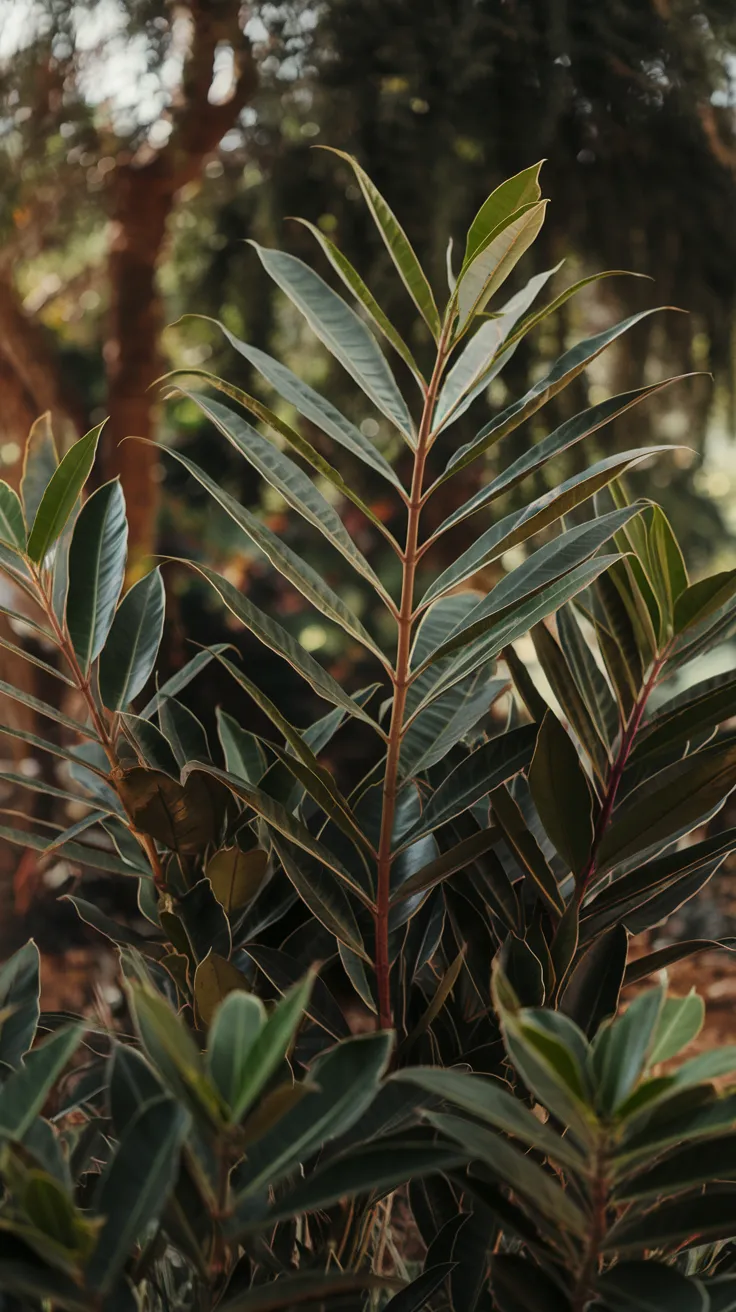
Plant Care and Maintenance
The Raven ZZ Plant thrives in a variety of conditions. This resilience makes it a popular houseplant. To keep your plant healthy, consider the following care tips:
Light Requirements
Raven ZZ Plants prefer indirect sunlight. While they can tolerate low light, avoid direct sun exposure. If the leaves start yellowing, it may need more light.
Watering Guidelines
Water the plant thoroughly but allow the soil to dry out completely before the next watering. Over-watering leads to root rot, which can damage your Raven ZZ Plant. Always check the top inch of soil before watering.
Humidity and Temperature
This plant is adaptable but prefers moderate humidity levels. Ideal indoor temperatures range between 60°F and 75°F. Avoid placing it near drafts or sudden temperature changes.
Fertilizing Tips
During the growing season, apply a balanced liquid fertilizer every 4-6 weeks. In winter, you can skip feeding. This helps maintain a healthy growth routine.
Pruning and Maintenance of Raven ZZ Plant
Periodically check for yellow or damaged leaves. Trim them off to encourage new growth. Wipe the leaves with a damp cloth to remove dust, promoting photosynthesis.
- Provide adequate light but avoid direct sunlight.
- Allow soil to dry out between waterings.
- Maintain moderate humidity and stable temperatures.
- Fertilize every 4-6 weeks during the growing season.
- Prune yellow or damaged leaves regularly.
Lastly, avoid repotting Raven ZZ Plants unless necessary. They prefer being slightly root-bound. When repotting, choose a pot one size larger with good drainage.
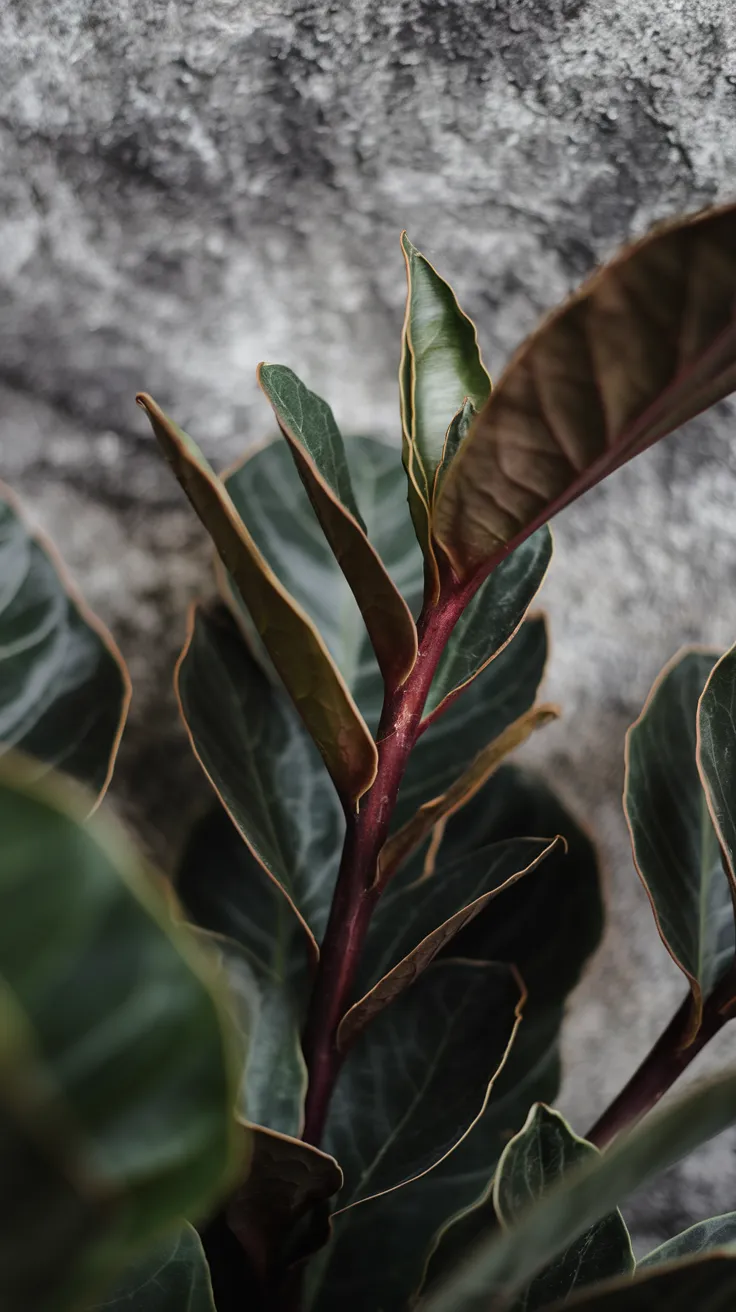
Propagation Techniques for Raven ZZ Plant
Propagation of the Raven ZZ Plant can be an exciting endeavor for plant enthusiasts.
This plant, known for its glossy, dark leaves, can be propagated successfully through leaf cuttings and division. First, let’s focus on the leaf cutting method. Start by selecting a healthy leaf from the Raven ZZ Plant. Use a sharp, sterile knife to cut the leaf at the base. After cutting, let the leaf callous for a few hours. This step is crucial as it helps prevent rot.
Next, prepare a well-draining potting mix. You can create a blend using potting soil, sand, and perlite. Once ready, plant the calloused leaf cutting into the soil. Water gently to moisten the mixture but avoid soaking it. Place the pot in a warm area with indirect sunlight to encourage rooting.
Alternatively, division is another effective propagation technique.
This method works best for mature Raven ZZ Plants. To propagate through division, carefully remove the plant from its pot. Be cautious to avoid damaging the roots. Gently separate the root ball into sections, ensuring each section has roots and some foliage. Plant the divisions in separate pots with fresh potting mix. Water thoroughly but avoid overwatering.
Regardless of the technique you choose, monitor the moisture level carefully. Overwatering can lead to the common issue of root rot. It is also beneficial to provide humidity around the newly propagated cuttings. Using a plastic bag or a humidity dome can help maintain the necessary moisture.
In a few weeks, you should notice new growth emerging from your Raven ZZ Plant cuttings. At this point, you can transition from the propagation pot to a permanent pot. Successful propagation not only allows you to expand your collection but also provides thriving new plants to share with friends.
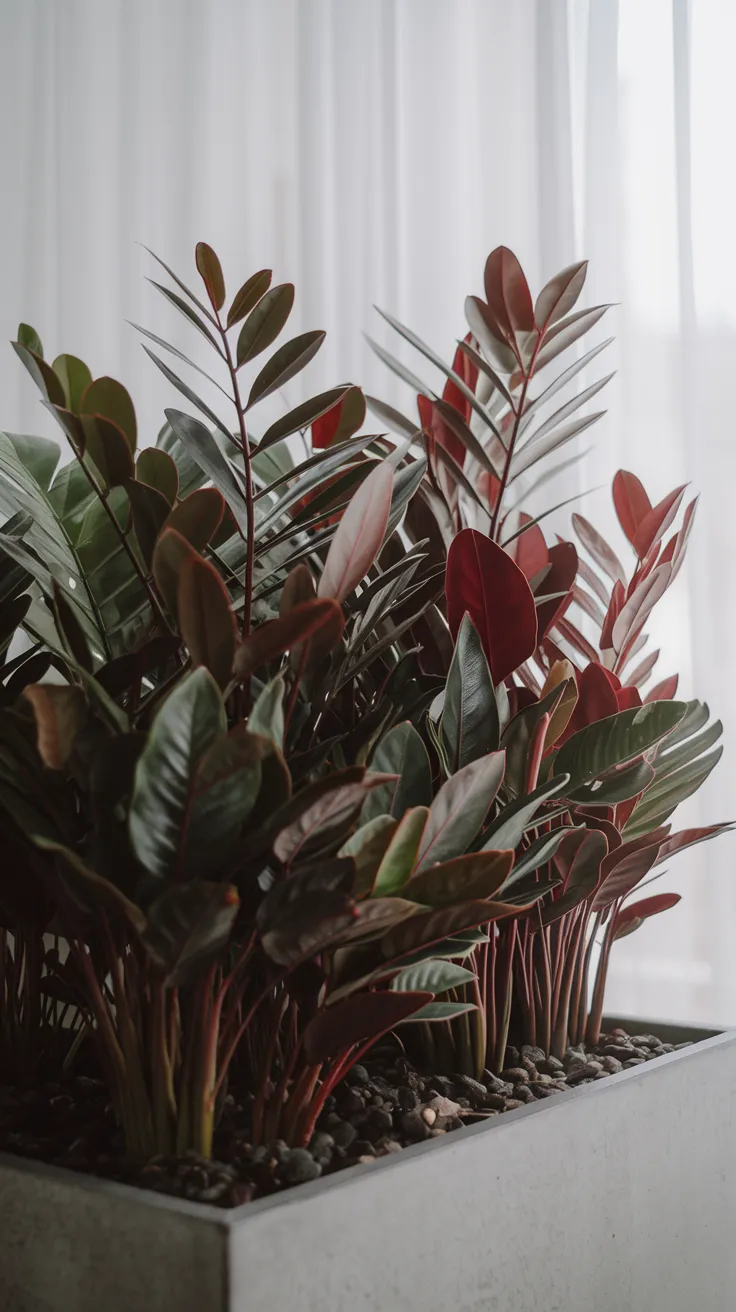
Common Problems and Solutions
The Raven ZZ Plant can face various challenges that may affect its health.
Common issues include yellowing leaves, stunted growth, or root rot. Fortunately, you can address these concerns effectively with proper care and attention.
- Yellowing Leaves: Yellow leaves can indicate overwatering. Ensure the pot has proper drainage and reduce watering frequency.
- Stunted Growth: If your Raven ZZ Plant isn’t growing, it might be related to poor light conditions. Move the plant to a brighter spot without direct sunlight.
- Root Rot: Root rot occurs when the roots sit in water. Ensure you use well-draining soil and allow excess water to escape after watering.
- Pests: Check for signs of pests like spider mites or aphids. Use neem oil or insecticidal soap to eliminate them.
- Leaf Drop: Sudden leaf drop may result from temperature fluctuations. Maintain a stable indoor environment for your plant.
To further illustrate common problems, consider the following table:
| Problem | Symptoms | Solution |
|---|---|---|
| Yellowing Leaves | Leaves turn yellow and may fall off. | Reduce watering and check drainage. |
| Stunted Growth | No new growth and slow development. | Increase light without direct exposure. |
| Root Rot | Leaves wilt despite adequate watering. | Repot in dry soil and improve drainage. |
| Pests | Visible insects on leaves or webbing. | Apply neem oil or insecticidal soap. |
| Leaf Drop | Sudden loss of multiple leaves. | Maintain consistent temperatures. |
Monitoring your Raven ZZ Plant regularly will help you quickly address any issues. With the right care plan, your plant can thrive.
Seasonal Care Adjustments
The Raven ZZ Plant requires specific adjustments throughout the seasons. By understanding its needs, you can ensure its health and vibrancy. During winter, limit watering to avoid root rot. The plant thrives in low light, so keep it away from direct sunlight. Interestingly, it tolerates neglect, but it appreciates occasional care.
Spring and Summer Care
In spring and summer, the Raven ZZ Plant becomes more active. Increase watering slightly when the soil is dry to the touch. Additionally, consider enhancing its light exposure, but avoid harsh sunlight. This helps in promoting healthy growth.
- Monitor humidity levels during hot months.
- Use a balanced fertilizer every few weeks.
- Check for pests on leaves occasionally.
Finally, observe your plant closely. Adjustments might be necessary based on its specific environment. By keeping these seasonal care tips in mind, you’ll promote a healthy Raven ZZ Plant throughout the year.
Microclimate Setup Tips
The Raven ZZ Plant thrives in specific microclimate conditions. Proper setup ensures healthy growth. Start by considering light, temperature, and humidity, as these factors greatly influence plant vitality.
Light Requirements
The Raven ZZ Plant does well in bright, indirect light. However, it can tolerate low light. Avoid direct sunlight, as it may scorch the leaves. Transitioning between different light conditions should be gradual to prevent shock.
Temperature Preferences
This plant flourishes in temperatures ranging from 65°F to 75°F (18°C to 24°C). It can tolerate slightly cooler or warmer climates. Avoid placing it near drafts or heat sources, like radiators or air conditioning units.
Humidity Levels
Raven ZZ Plants prefer average household humidity levels. They can adapt to lower humidity but thrive with higher humidity. Consider using a humidity tray to enhance moisture levels around your plant.
Setup Tips
- Place your Raven ZZ Plant in a well-draining pot to prevent root rot.
- Rotate the pot periodically to ensure even light exposure.
- Avoid overwatering; let the soil dry out completely between waterings.
- Monitor the plant’s leaves for signs of distress, and adjust the microclimate as needed.
- Consider grouping plants together to naturally increase humidity.
Following these microclimate setup tips will help your Raven ZZ Plant thrive. Ensure that you regularly check the environment and make adjustments when necessary.
Frequently Asked Questions
The Raven ZZ Plant (Zamioculcas zamiifolia) is a popular choice among indoor gardeners. It thrives in low light and requires minimal care. This hardy plant can tolerate periods of drought due to its unique rhizomes. For those wondering, it’s essential to avoid overwatering. Doing so can lead to root rot, a common issue with houseplants. The ideal watering schedule is every two to three weeks, depending on the environment.
Another frequently asked question is about its growth rate. The Raven ZZ Plant grows slowly, which makes it a great option for those who prefer low-maintenance greenery. Propagation can be done through leaf cuttings, but patience is necessary; it may take time for new growth to appear. In terms of fertilization, a diluted liquid fertilizer once every few months is sufficient.
If you have pets, you might be concerned. While the Raven ZZ Plant is considered toxic to pets, keeping it out of reach helps prevent ingestion. Lastly, dusting the leaves occasionally not only keeps them attractive but also improves photosynthesis. Overall, this plant is a rewarding addition to any home.
Summary and Recommendations
The Raven ZZ Plant is an excellent choice for both novice and seasoned plant enthusiasts. It features striking, dark green leaves that appear almost black in certain lighting. This unique coloration makes it a standout addition to any indoor space.
It thrives in various conditions, requiring minimal care, which is ideal for busy individuals. Additionally, the plant tolerates low light, making it suitable for darker rooms.
Moreover, the Raven ZZ Plant is drought-tolerant. You can water it infrequently, reducing the risk of overwatering. Thus, it remains a low-maintenance houseplant that enhances any décor.
For optimal growth, place it in a pot with well-draining soil. Keep it in indirect sunlight to avoid leaf burn. Overall, this plant combines beauty with ease of care, making it a top recommendation for indoor gardening enthusiasts.



